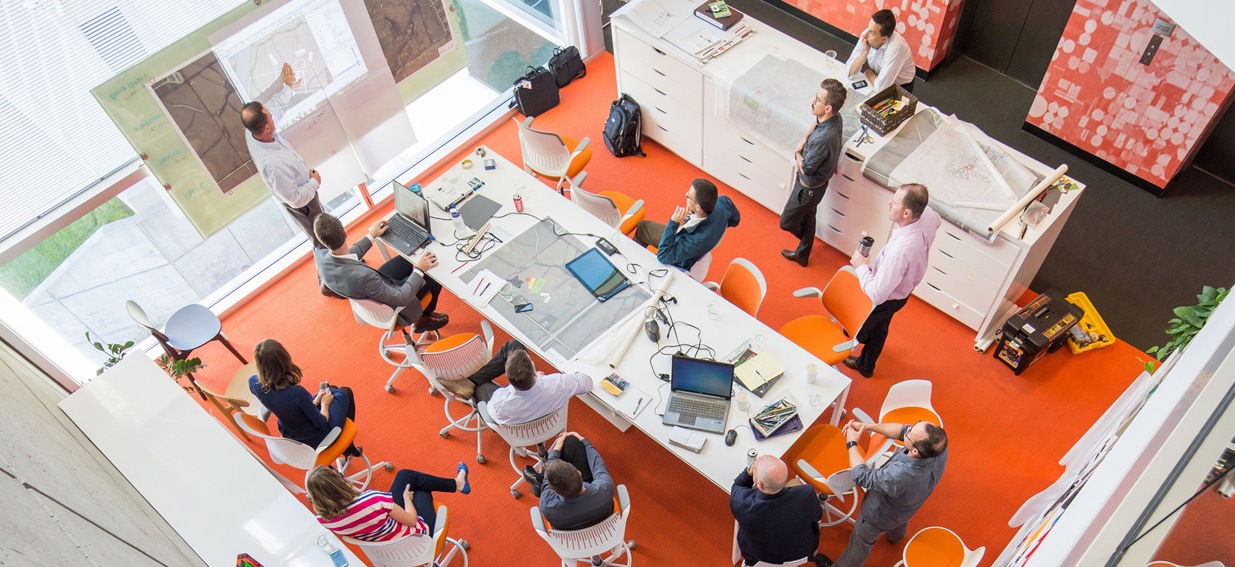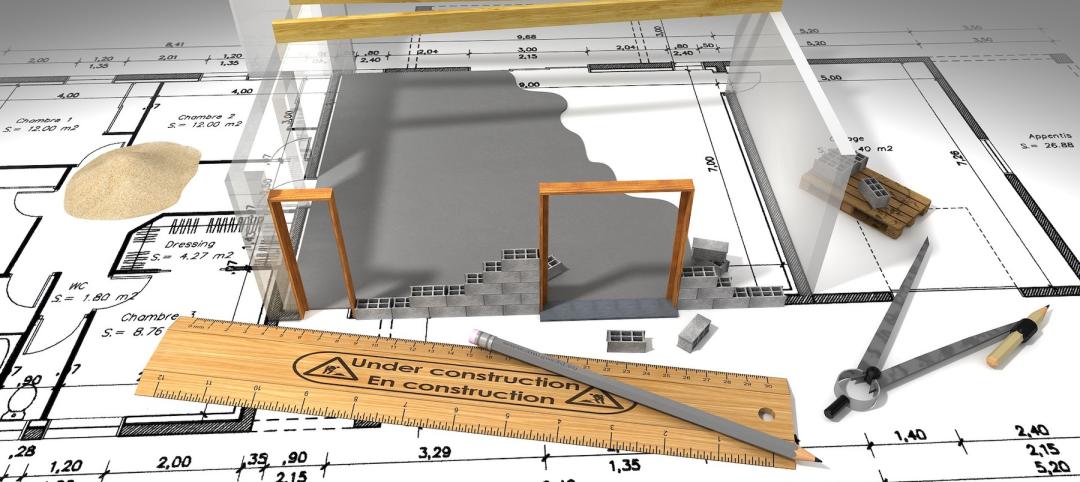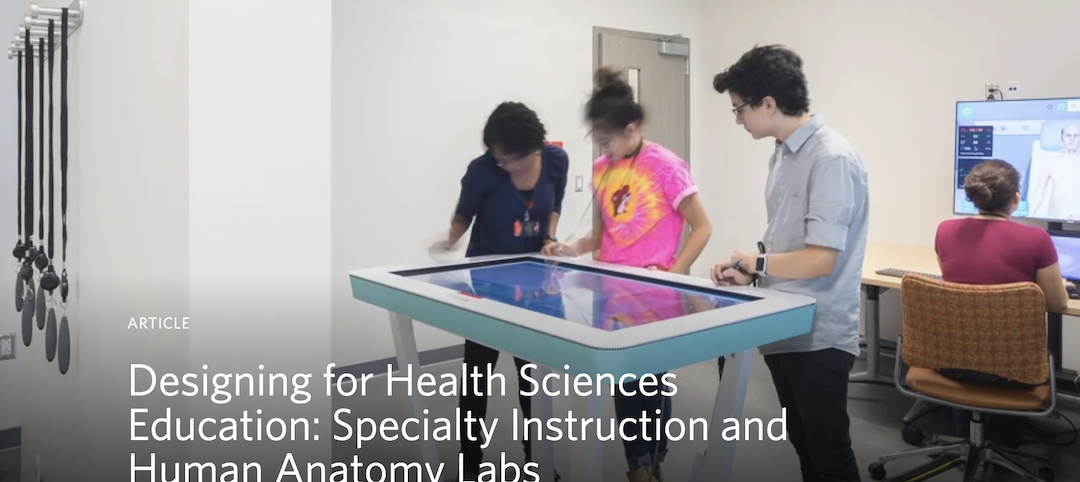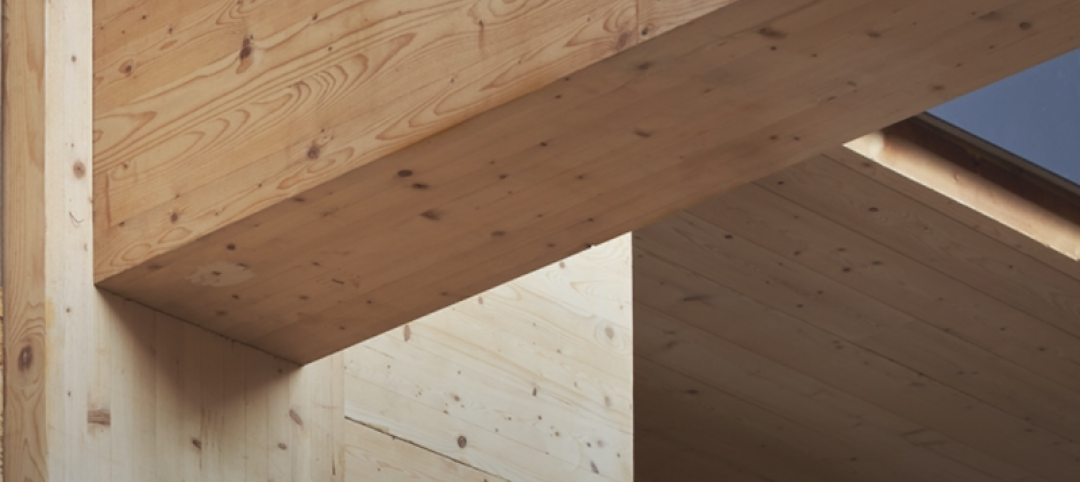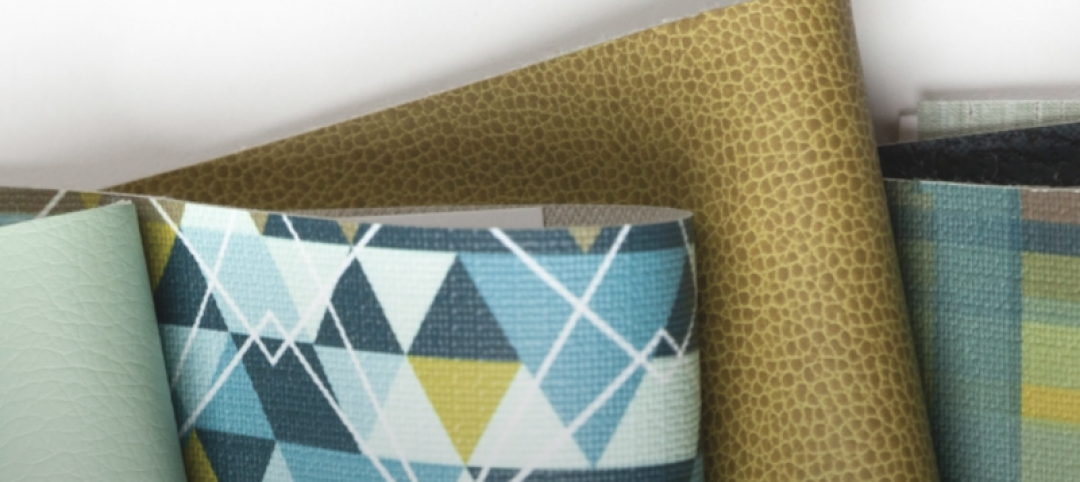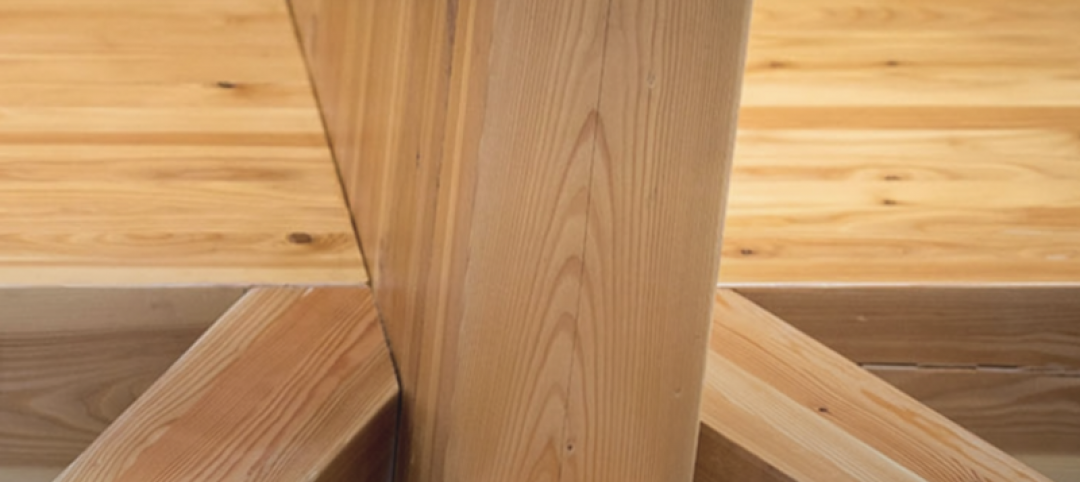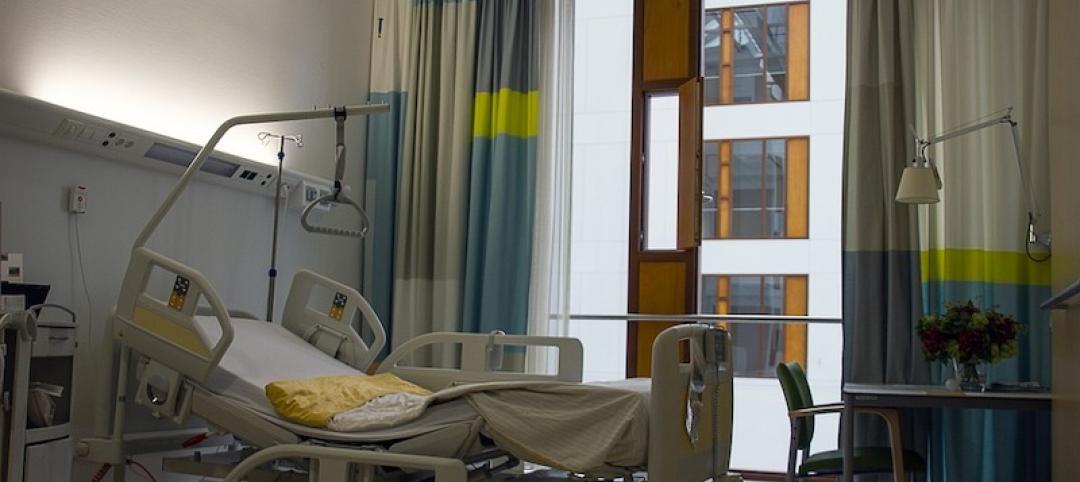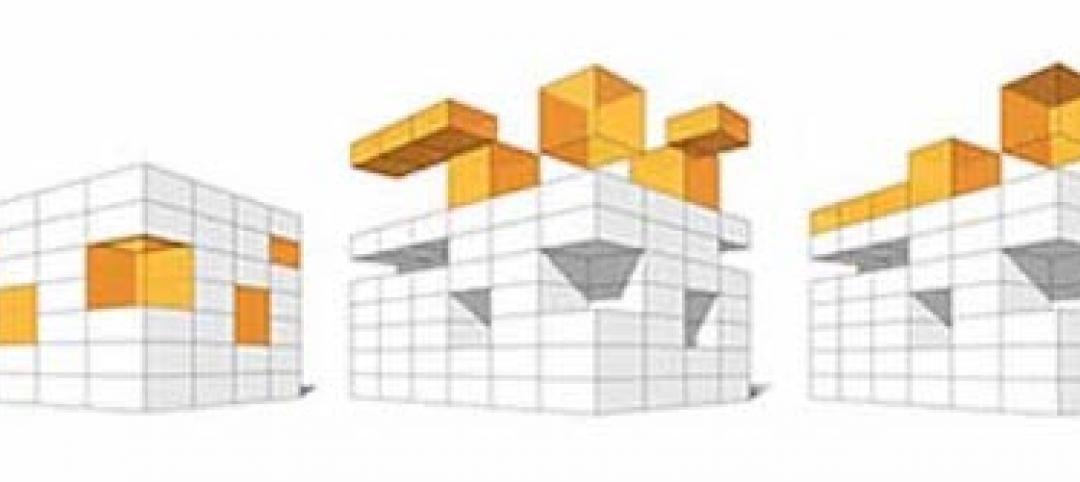Let’s face it: some offices aren’t exactly the most motivating places to work. We’ve all visited (or worked in) an office with a soulless beige color palette, ominous florescent lighting, high cubicle walls and low morale. But flipping to an open-plan “modern” workspace—with no cubicle walls, no boundaries, and no privacy—sometimes creates more problems than it solves.
So how do you strike a balance between the two philosophies? The truth is: office design is not one-size-fits-all. Each workplace requires a different blend of people, processes, tools and spaces to support its employees. The tips below can guide you toward the perfect balance for your company.
1. Engage employees and culture. Engaged employees are committed to an organization’s goals and values, and motivated to contribute to its success. Their productivity and job satisfaction is supported by a workplace that enables connections between coworkers and teams, communicates organizational goals and values through the environment, facilitates work activities and allows individual expression through personalization and reconfiguration of space.
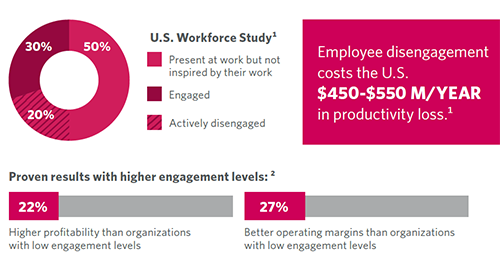
2. Wellness matters. Because employees’ physical and psychological well-being affects productivity, performance and quality, progressive companies are using their workplaces to support a healthy lifestyle by providing spaces for physical activity, appropriate levels of sensory stimulation, environmental control and social interaction.
3. Accommodate personalization. The proliferation of personal technology tools blurs the boundaries of traditional work settings. As a platform for mobile work, and in combination with social media and virtual meeting technology, the ability to work, connect and collaborate anywhere and at anytime is expanding exponentially. The workplace must engage technology seamlessly while facilitating productivity and efficiency gains.
4. Access shared tools. High-tech and low-tech equipment and communication tools support the work process. Whether it’s a white board, an ergonomic hot desk or a dock station, the right tools appropriately placed can go a long way to support work efficiency and effectiveness.
5. Embrace mobility. Organizations are adopting mobile/flexible working as a strategy to increase productivity, employee engagement and performance. What that looks like depends upon the organization’s culture, work process and real estate. Drivers like attraction and retention, work-life balance, employee satisfaction and real estate costs dovetail with the need to build stronger networks and teams to craft an approach that supports working anywhere, anytime as long as the work gets done.
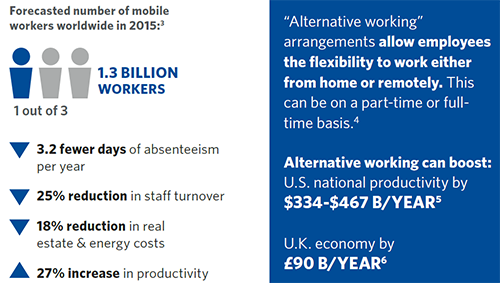
6. Manage change. The success of any workplace change depends on carefully and actively managing that change to improve acceptance, ensure timeliness and promote necessary culture shifts. The most effective change management programs are highly communicative and consist of defining the scope of workplace changes, participation, on-going education with occupants, and feedback.
7. Reshape teamwork. Today’s dynamic operational environment is transforming teamwork to become more virtual (distributed), self-directed and mobile. Communication happens primarily through electronic media (e-mail, telephone, video conference). Corresponding challenges for the workplace include virtual team building, social networking and a periodic need for face-to-face interaction.
8. Support working alone. The wave of new workplace practices increases the potential for visual, acoustic, thermal and lighting distractions, which in turn results in lost efficiency and lower job satisfaction. The workplace needs to provide settings to support concentration, working alone and privacy (visual, acoustical, spatial and digital).
9. Create space for collaboration. The most beneficial work relationships occur when people physically interact with each other, working collaboratively, sharing knowledge, and communicating effectively. Branded spaces should be designed in proximity to team members with collaboration tools that will accommodate and support small groups, impromptu discussions and web meetings.
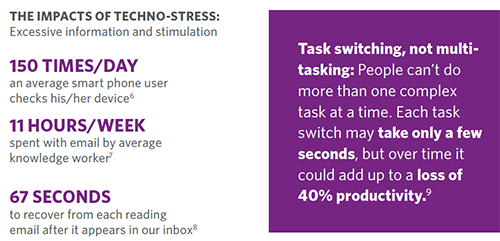
10. Socialize for best connections. Socializing in the workplace is critical to foster relationship development for knowledge sharing, effective teamwork, sense of community and shared culture. Enhance social interaction by providing casual and flexible spaces that act as destinations located along common paths of travel.
A downloadable PDF of these ideas is available here.
About the Author: Allison Arnone, the Principal Workplace Strategist at HDR BLiNK, appreciates creativity and artistic talent at every level, from food art to fine art to fabulous architecture. A proud Drexel University grad with a BS in interior design, Allison uses her creative and analytical skills as a Principal Strategic Planner to support and inform great workplace design with innovative solutions. In the spirit of continuous improvement and sharing lessons learned, Allison formed the S + T Workplace Research Group and is also responsible for developing the Post-occupancy Evaluation program at HDR. A native of both Hudson, Massachusetts and Philadelphia, Allison is now enjoys living in the picturesque region of central New Jersey with her three kids. She loves doing anything outdoors, cooking up something new and dreaming about owning a coffee shop in Woods Hole, Massachusetts.
More from Author
HDR | Jun 30, 2022
Adopting a regenerative design mindset
To help address the current climate emergency, a new way of thinking across the entire architecture, engineering and construction industry is imperative.
HDR | Jan 11, 2022
Designing for health sciences education: supporting student well-being
While student and faculty health and well-being should be a top priority in all spaces within educational facilities, this article will highlight some key considerations.
HDR | Sep 28, 2021
Designing for health sciences education: Specialty instruction and human anatomy labs
It is a careful balance within any educational facility to provide both multidisciplinary, multiuse spaces and special-use spaces that serve particular functions.
HDR | Aug 20, 2021
Prioritizing children’s perspectives with play-based design charrettes
Every effort is made to assure that captured insights and observations are authentically from the children.
HDR | Sep 25, 2020
Performance-based textile cleaning and disinfection in the age of COVID-19
It is essential for both designers and environmental services to know the active ingredient(s) of the cleaning products being used within the facility.
HDR | Jan 27, 2020
Elevating the human experience in public realm infrastructure
Understanding the complexities of a community by pairing quantitative data and human needs.
HDR | Oct 2, 2019
Why mass timber?
In a world where the construction industry is responsible for 40% to 50% of CO2 emissions, renewable materials, such as wood, can help mitigate the rate of global warming.
HDR | Aug 23, 2019
5 converging trends for healthcare's future
Our solutions to both today’s and tomorrow’s challenges lie at the convergence of technologies, industries, and types of care.
HDR | Dec 18, 2018
Redesigning the intergenerational village: Innovative solutions for communities and homes of the future
Social sustainability has become a central concern in terms of its effect that spans generations.

